Hct levels in blood. Understanding Hematocrit and Hemoglobin: Key Components of a Complete Blood Count
What is a Complete Blood Count. How does it help diagnose various health conditions. What are the main components of a CBC test. How do hematocrit and hemoglobin levels impact overall health.
The Importance of Complete Blood Count in Medical Diagnosis
A Complete Blood Count (CBC) is a fundamental medical test that provides crucial information about the composition and quality of blood cells. This comprehensive analysis helps healthcare professionals assess overall health, diagnose various conditions, and monitor the effectiveness of treatments.
The CBC test examines several key components of blood, including:
- White blood cells (WBCs)
- Red blood cells (RBCs)
- Platelets
- Hematocrit (HCT)
- Hemoglobin (Hgb)
Each of these components plays a vital role in maintaining health and can indicate the presence of underlying medical conditions when their levels are abnormal.
Decoding White Blood Cells: The Body’s Defense Mechanism
White blood cells, also known as leukocytes, are the body’s primary defense against infections and diseases. These cells are larger than red blood cells but fewer in number. During a CBC, both the total white blood cell count and the differential count of specific types of white blood cells are analyzed.

Types of White Blood Cells and Their Functions
The main types of white blood cells include:
- Neutrophils: Combat bacterial infections
- Lymphocytes: Fight viral infections and produce antibodies
- Monocytes: Engulf and destroy pathogens
- Eosinophils: Respond to allergic reactions and parasitic infections
- Basophils: Release histamine during inflammatory responses
An elevated white blood cell count often indicates the presence of an infection or inflammation in the body. Conversely, a low count may suggest a weakened immune system or bone marrow disorders.
Red Blood Cells: The Oxygen Carriers of the Body
Red blood cells, or erythrocytes, are responsible for transporting oxygen from the lungs to various tissues throughout the body. They also carry carbon dioxide back to the lungs for exhalation. The CBC measures the red blood cell count, which can reveal important information about a person’s overall health.
Is a high red blood cell count always beneficial? Contrary to what one might assume, an abnormally high RBC count (polycythemia) can be problematic. It may lead to blood clumping and potentially block small blood vessels, impeding oxygen delivery. On the other hand, a low RBC count indicates anemia, a condition where the body doesn’t receive adequate oxygen.

Hematocrit: Measuring Blood Volume Composition
Hematocrit (HCT) is a crucial component of the CBC that measures the proportion of red blood cells in the total blood volume. This value is expressed as a percentage and provides valuable insights into blood composition and potential health issues.
How is hematocrit measured? The test involves centrifuging a blood sample to separate its components. The packed red blood cells at the bottom of the tube are measured against the total blood volume. For instance, a hematocrit of 45% means that 45% of the blood volume consists of red blood cells.
Hematocrit levels can indicate various conditions:
- Low hematocrit: May suggest anemia, blood loss, or nutritional deficiencies
- High hematocrit: Could indicate polycythemia, dehydration, or living at high altitudes
Hemoglobin: The Oxygen-Binding Protein
Hemoglobin (Hgb) is a protein found in red blood cells that binds to oxygen and gives blood its characteristic red color. The hemoglobin test measures the amount of this protein in the blood, providing a good indication of the blood’s oxygen-carrying capacity.

Why is hemoglobin important? Hemoglobin plays a crucial role in delivering oxygen to tissues throughout the body. Low hemoglobin levels can lead to fatigue, weakness, and shortness of breath, while high levels may indicate underlying health issues or exposure to high altitudes.
Normal hemoglobin levels vary depending on age, gender, and other factors:
- Adult men: 13.5 to 17.5 grams per deciliter (g/dL)
- Adult women: 12.0 to 15.5 g/dL
- Children: Varies by age
Red Blood Cell Indices: Unveiling Blood Cell Characteristics
Red blood cell indices provide additional information about the size, shape, and hemoglobin content of red blood cells. These measurements help diagnose specific types of anemia and other blood disorders.
Key Red Blood Cell Indices
- Mean Corpuscular Volume (MCV): Measures the average size of red blood cells
- Mean Corpuscular Hemoglobin (MCH): Indicates the average amount of hemoglobin in each red blood cell
- Mean Corpuscular Hemoglobin Concentration (MCHC): Measures the average concentration of hemoglobin in a given volume of red blood cells
- Red Cell Distribution Width (RDW): Shows the variation in red blood cell size
How do these indices help in diagnosis? Abnormalities in these values can point to specific types of anemia. For example, a low MCV might indicate iron deficiency anemia, while a high MCV could suggest vitamin B12 or folate deficiency.

Platelets: The Clotting Components of Blood
Platelets, also known as thrombocytes, are small blood cells crucial for blood clotting. The CBC measures both the platelet count and the mean platelet volume (MPV), providing insights into the body’s ability to form blood clots and prevent excessive bleeding.
What happens when platelet levels are abnormal? A low platelet count (thrombocytopenia) can lead to easy bruising and prolonged bleeding. Conversely, a high platelet count (thrombocytosis) may increase the risk of blood clots forming in blood vessels.
Platelets also play a role in the inflammatory response and may contribute to the development of atherosclerosis, a condition characterized by the hardening and narrowing of arteries.
Clinical Applications of Complete Blood Count
The Complete Blood Count is a versatile diagnostic tool used in various clinical scenarios. Healthcare providers may order a CBC for multiple reasons, including:
- Routine health check-ups
- Diagnosing unexplained symptoms like fatigue, weakness, or fever
- Screening for anemia
- Assessing blood loss in cases of injury or surgery
- Monitoring the progression of blood disorders
- Evaluating the effectiveness of medical treatments
How often should one undergo a CBC test? The frequency of CBC tests depends on individual health status, age, and specific medical conditions. Healthy adults may have a CBC as part of their annual physical exam, while those with chronic conditions or undergoing certain treatments may require more frequent testing.
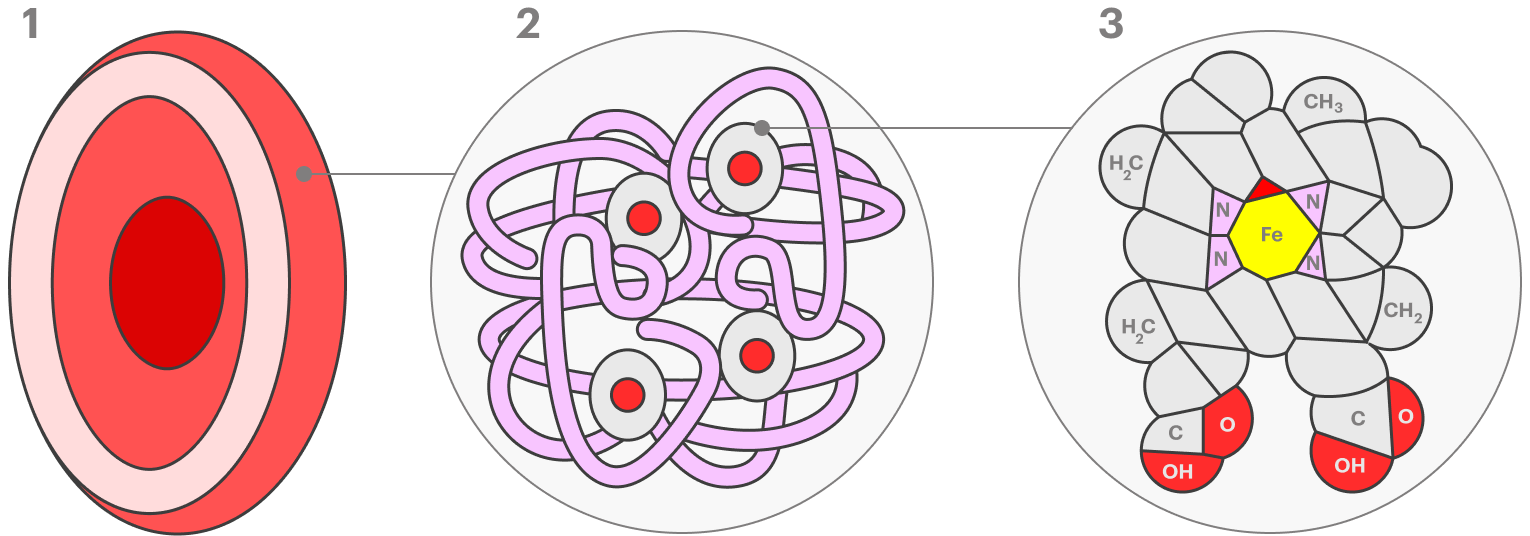
Interpreting CBC Results
Interpreting CBC results requires medical expertise, as the significance of values can vary based on individual factors. Healthcare providers consider the following when analyzing CBC results:
- Age and gender
- Overall health status
- Medications being taken
- Recent medical procedures or treatments
- Lifestyle factors (e.g., smoking, alcohol consumption)
Can CBC results be affected by external factors? Yes, certain factors can influence CBC results, including:
- Recent physical activity
- Altitude
- Dehydration
- Pregnancy
- Certain medications
It’s essential to inform healthcare providers of any relevant factors that might affect test results for accurate interpretation.
Advances in CBC Testing Technology
The field of hematology has seen significant advancements in CBC testing technology over the years. Modern automated hematology analyzers can process large numbers of samples quickly and accurately, providing detailed information about blood cell characteristics.

What are some recent innovations in CBC testing? Some notable developments include:
- Flow cytometry techniques for more precise cell identification
- Digital imaging systems for blood cell morphology analysis
- Point-of-care CBC devices for rapid testing in various healthcare settings
- Integration of artificial intelligence for improved result interpretation
These advancements have enhanced the diagnostic capabilities of CBC tests, allowing for earlier detection of blood disorders and more personalized treatment approaches.
The Role of CBC in Monitoring Chronic Conditions
Complete Blood Count plays a crucial role in monitoring various chronic conditions, providing valuable insights into disease progression and treatment effectiveness. Some conditions where CBC is particularly useful include:
Hematological Disorders
CBC is essential in diagnosing and monitoring blood disorders such as:
- Leukemia
- Lymphoma
- Myelodysplastic syndromes
- Aplastic anemia
How does CBC help in managing these conditions? Regular CBC tests allow healthcare providers to track changes in blood cell populations, assess the effectiveness of treatments, and adjust therapeutic strategies as needed.

Inflammatory and Autoimmune Diseases
CBC can provide valuable information in monitoring inflammatory and autoimmune conditions, including:
- Rheumatoid arthritis
- Lupus
- Inflammatory bowel disease
What specific CBC parameters are relevant in these conditions? Elevated white blood cell counts, particularly neutrophils, can indicate active inflammation. Additionally, anemia of chronic disease is common in these conditions and can be monitored through red blood cell indices.
Cardiovascular Diseases
CBC parameters can provide insights into cardiovascular health and risk factors. For example:
- High red blood cell counts may indicate an increased risk of blood clots
- Elevated white blood cell counts have been associated with a higher risk of heart disease
- Platelet counts can be relevant in assessing the risk of thrombotic events
How often should CBC be performed in patients with cardiovascular diseases? The frequency of CBC testing in cardiovascular patients depends on individual risk factors, ongoing treatments, and overall health status. Healthcare providers typically determine the appropriate testing schedule based on these factors.

CBC in Pregnancy: Monitoring Maternal and Fetal Health
Complete Blood Count is an essential tool in monitoring the health of both mother and fetus during pregnancy. CBC tests are typically performed at various stages of pregnancy to assess:
- Maternal anemia
- Risk of infections
- Platelet counts for assessing bleeding risk
How do CBC parameters change during pregnancy? Several changes occur in blood composition during pregnancy:
- Increased plasma volume leads to a relative decrease in hematocrit and hemoglobin levels
- White blood cell counts tend to increase slightly
- Platelet counts may decrease modestly
Understanding these physiological changes is crucial for accurately interpreting CBC results in pregnant women and distinguishing between normal adaptations and potential health concerns.
The Future of CBC: Integration with Advanced Diagnostics
As medical science advances, the role of CBC is evolving and integrating with other diagnostic technologies to provide more comprehensive health assessments. Some emerging trends include:

Genetic Testing Integration
Combining CBC results with genetic testing can offer deeper insights into inherited blood disorders and predispositions to certain conditions. How does this integration enhance diagnosis? By correlating CBC parameters with genetic markers, healthcare providers can:
- Identify carriers of hereditary blood disorders
- Predict the likelihood of developing certain hematological conditions
- Tailor treatment approaches based on genetic profiles
Biomarker Analysis
Integrating CBC with biomarker analysis can provide a more comprehensive picture of overall health. What types of biomarkers can complement CBC results?
- Inflammatory markers (e.g., C-reactive protein)
- Nutritional status indicators (e.g., ferritin, vitamin B12)
- Hormonal markers
This combined approach allows for more precise diagnosis and monitoring of various health conditions.
Artificial Intelligence and Machine Learning
The application of AI and machine learning algorithms to CBC data analysis holds promising potential. How can AI enhance CBC interpretation?

- Identifying subtle patterns in blood cell parameters that may indicate early-stage diseases
- Predicting treatment responses based on CBC trends
- Assisting in the diagnosis of rare blood disorders
These advancements could significantly improve the diagnostic accuracy and predictive value of CBC tests in the future.
Conclusion: The Enduring Value of CBC in Healthcare
The Complete Blood Count remains a cornerstone of medical diagnostics, offering invaluable insights into various aspects of health and disease. From assessing overall wellness to diagnosing complex blood disorders, CBC continues to play a crucial role in patient care.
As technology advances and our understanding of blood biology deepens, the CBC test is likely to become even more powerful and informative. The integration of CBC with genetic testing, biomarker analysis, and artificial intelligence promises to enhance its diagnostic capabilities further, potentially revolutionizing how we approach health assessment and disease management.

While new diagnostic tools emerge, the fundamental importance of CBC in providing a comprehensive picture of blood health ensures its continued relevance in medical practice. As we move forward, the CBC will undoubtedly remain an essential tool in the healthcare provider’s arsenal, contributing to improved patient outcomes and more personalized medical care.
Complete Blood Count (CBC) | Kaiser Permanente
Skip Navigation
Test Overview
A complete blood count (CBC) gives important information about the kinds and numbers of cells in the blood, especially red blood cells, white blood cells, and platelets. A CBC helps your doctor check any symptoms that you may have, such as weakness, fatigue, or bruising. A CBC also helps him or her diagnose conditions, such as anemia, infection, and many other disorders.
A CBC test usually includes:
- White blood cell (WBC, leukocyte) count.
White blood cells protect the body against infection. If an infection develops, white blood cells attack and destroy the bacteria, virus, or other organism causing it.
 White blood cells are bigger than red blood cells but fewer in number. When a person has a bacterial infection, the number of white cells rises very quickly. The number of white blood cells is sometimes used to find an infection or to see how the body is dealing with cancer treatment.
White blood cells are bigger than red blood cells but fewer in number. When a person has a bacterial infection, the number of white cells rises very quickly. The number of white blood cells is sometimes used to find an infection or to see how the body is dealing with cancer treatment.- White blood cell types (WBC differential).
The major types of white blood cells are neutrophils, lymphocytes, monocytes, eosinophils, and basophils. Immature neutrophils, called band neutrophils, are also part of this test. Each type of cell plays a different role in protecting the body. The numbers of each one of these types of white blood cells give important information about the immune system. Too many or too few of the different types of white blood cells can help find an infection, an allergic or toxic reaction to medicines or chemicals, and many conditions, such as leukemia.

- Red blood cell (RBC) count.
Red blood cells carry oxygen from the lungs to the rest of the body. They also carry carbon dioxide back to the lungs so it can be exhaled. If the RBC count is low (anemia), the body may not be getting the oxygen it needs. If the count is too high (a condition called polycythemia), there’s a chance that the red blood cells will clump together and block tiny blood vessels (capillaries). This also makes it hard for your red blood cells to carry oxygen.
- Hematocrit (HCT, packed cell volume, PCV).
This test measures the amount of space (volume) red blood cells take up in the blood. The value is given as a percentage of red blood cells in a volume of blood.
 For example, a hematocrit of 38 means that 38% of the blood’s volume is made of red blood cells. Hematocrit and hemoglobin values are the two major tests that show if anemia or polycythemia is present.
For example, a hematocrit of 38 means that 38% of the blood’s volume is made of red blood cells. Hematocrit and hemoglobin values are the two major tests that show if anemia or polycythemia is present.- Hemoglobin (Hgb).
The hemoglobin molecule fills up the red blood cells. It carries oxygen and gives the blood cell its red color. The hemoglobin test measures the amount of hemoglobin in blood. It’s a good measure of how well the blood can carry oxygen throughout the body.
- Red blood cell indices.
There are three red blood cell indices: mean corpuscular volume (MCV), mean corpuscular hemoglobin (MCH), and mean corpuscular hemoglobin concentration (MCHC).
 They are measured by a machine, and their values come from other measurements in a CBC. The MCV shows the size of the red blood cells. The MCH value is the amount of hemoglobin in an average red blood cell. The MCHC measures the concentration of hemoglobin in an average red blood cell. These numbers help in the diagnosis of different types of anemia. Red cell distribution width (RDW) can also be measured. It shows if the cells are all the same or different sizes or shapes.
They are measured by a machine, and their values come from other measurements in a CBC. The MCV shows the size of the red blood cells. The MCH value is the amount of hemoglobin in an average red blood cell. The MCHC measures the concentration of hemoglobin in an average red blood cell. These numbers help in the diagnosis of different types of anemia. Red cell distribution width (RDW) can also be measured. It shows if the cells are all the same or different sizes or shapes.- Platelet (thrombocyte) count.
Platelets (thrombocytes) are the smallest type of blood cell. They are important in blood clotting. When bleeding occurs, the platelets swell, clump together, and form a sticky plug that helps stop the bleeding. If there are too few platelets, uncontrolled bleeding may be a problem. If there are too many platelets, there is a chance of a blood clot forming in a blood vessel.
 Also, platelets may be involved in hardening of the arteries (atherosclerosis).
Also, platelets may be involved in hardening of the arteries (atherosclerosis).- Mean platelet volume (MPV).
Mean platelet volume measures the average amount (volume) of platelets. MPV is used along with platelet count to diagnose some diseases. If the platelet count is normal, the MPV can still be too high or too low.
Why It Is Done
A CBC may be done as part of a regular physical exam. There are many other reasons that a doctor may want this blood test, including to:
- Find the cause of symptoms such as fatigue, weakness, fever, bruising, or weight loss.
- Check for anemia.
- See how much blood has been lost if there is bleeding.

- Diagnose polycythemia.
- Check for an infection.
- Diagnose diseases of the blood, such as leukemia.
- Check how the body is dealing with some types of drug or radiation treatment.
- Check how abnormal bleeding is affecting the blood cells and counts.
- Screen for high and low values before a surgery.
- See if there are too many or too few of certain types of cells. This may help find other conditions. For instance, too many eosinophils may be a sign of an allergy or asthma.
A blood count can give valuable information about the general state of your health.
How To Prepare
In general, there’s nothing you have to do before this test, unless your doctor tells you to.
How It Is Done
A health professional uses a needle to take a blood sample, usually from the arm.
Watch
- Learning About Your Blood Test
- Learning About Blood Tests for Children
How It Feels
When a blood sample is taken, you may feel nothing at all from the needle. Or you might feel a quick sting or pinch.
Risks
There is very little chance of having a problem from this test. When a blood sample is taken, a small bruise may form at the site.
Results
Normal
Each lab has a different range for what’s normal. Your lab report should show the range that your lab uses for each test.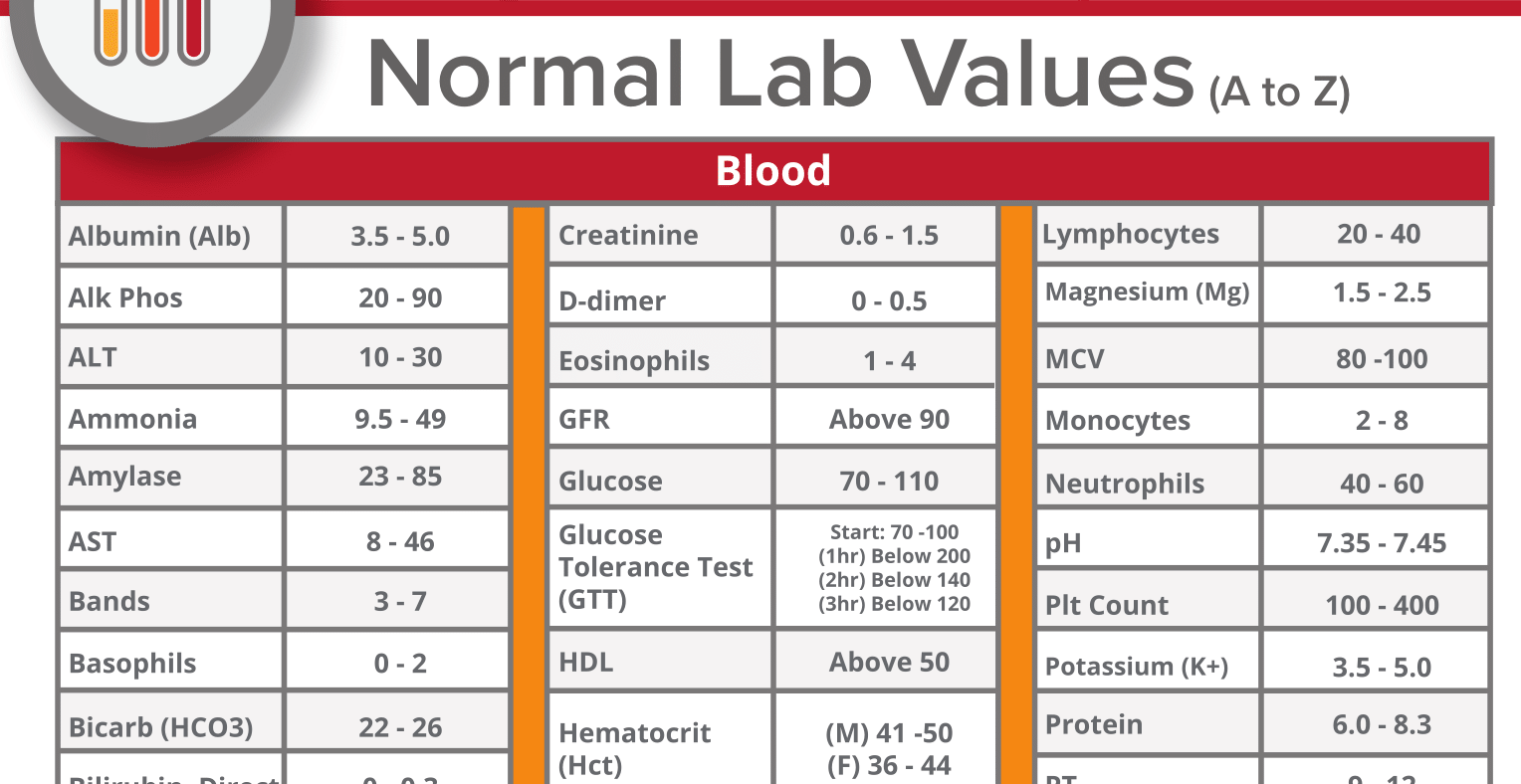 The normal range is just a guide. Your doctor will also look at your results based on your age, health, and other factors. A value that isn’t in the normal range may still be normal for you.
The normal range is just a guide. Your doctor will also look at your results based on your age, health, and other factors. A value that isn’t in the normal range may still be normal for you.
Normal values for the complete blood count (CBC) tests depend on age, sex, how high above sea level you live, and the type of blood sample. Your doctor may use all the CBC values to check for a condition. For example, the red blood cell (RBC) count, hemoglobin (Hgb), and hematocrit (HCT) are the most important values needed to tell whether a person has anemia. But the red blood cell indices and the blood smear also help with the diagnosis and may show a possible cause for the anemia.
To see if the white blood cell (WBC, leukocyte) count is good and how the cells look on the smear, your doctor will look at both the number (WBC count) and the WBC differential. To see whether there are too many or too few of a certain type of cell, your doctor will look at the total count and the percentage of that particular cell. There are normal values for the total number of each type of white cell.
There are normal values for the total number of each type of white cell.
Pregnancy can change these blood values. Your doctor will talk with you about normal values during each trimester of your pregnancy.
Normal: | Blood cells are normal in shape, size, color, and number. |
|---|
High values
- Red blood cells (RBC).
- Conditions that cause high RBC values include smoking, exposure to carbon monoxide, long-term lung disease, kidney disease, some cancers, certain forms of heart disease, alcohol use disorder, liver disease, a rare disorder of the bone marrow (polycythemia vera), and a rare disorder of hemoglobin that binds oxygen tightly.

- Conditions that affect the body’s water content can also cause high RBC values. These conditions include dehydration, diarrhea or vomiting, excessive sweating, and the use of diuretics. The lack of fluid in the body makes the RBC volume look high. This is sometimes called spurious polycythemia.
- Conditions that cause high RBC values include smoking, exposure to carbon monoxide, long-term lung disease, kidney disease, some cancers, certain forms of heart disease, alcohol use disorder, liver disease, a rare disorder of the bone marrow (polycythemia vera), and a rare disorder of hemoglobin that binds oxygen tightly.
- White blood cells (WBC, leukocytes).
- Conditions that cause high WBC values include infection, inflammation, damage to body tissues (such as a heart attack), severe physical or emotional stress (such as a fever, injury, or surgery), kidney failure, lupus, tuberculosis (TB), rheumatoid arthritis, malnutrition, leukemia, and diseases such as cancer.
- The use of corticosteroids, underactive adrenal glands, thyroid gland problems, certain medicines, and removal of the spleen can also cause high WBC values.

- Platelets.
- High platelet values may be seen with bleeding, iron deficiency, some diseases like cancer, or problems with the bone marrow.
Low values
- Red blood cells (RBC).
- Anemia lowers RBC values. Anemia can be caused by heavy menstrual bleeding, stomach ulcers, colon cancer, inflammatory bowel disease, some tumors, Addison’s disease, thalassemia, lead poisoning, sickle cell disease, and reactions to some chemicals and medicines. A low RBC value may also be seen if the spleen has been taken out.
- A lack of folic acid or vitamin B12 can also cause anemia, such as pernicious anemia.
 This is a problem with absorbing vitamin B12.
This is a problem with absorbing vitamin B12. - The RBC indices value and a blood smear may help find the cause of anemia.
- White blood cells (WBC, leukocytes).
- Conditions that can lower WBC values include chemotherapy and reactions to other medicines, aplastic anemia, viral infections, malaria, alcohol use disorder, AIDS, lupus, and Cushing’s syndrome.
- A large spleen can lower the WBC count.
- Platelets.
- Low platelet values can occur in pregnancy or immune thrombocytopenic purpura (ITP) and other conditions that affect how platelets are made or that destroy platelets.
- A large spleen can lower the platelet count.

Credits
- Top of the page
Next Section:
Why It Is Done
Los Angeles Blood Alcohol Content Attorney Kraut Law Group
Los Angeles DUI Attorney
After someone has been pulled over and arrested for a Los Angeles driving under the influence offense, he or she will be asked to submit to chemical testing to determine blood alcohol content. The driver is given the option of taking either the breath or blood test. In many cases, people will choose the breath test. This option is less invasive than the blood test, which requires a blood draw by a licensed medical professional. Officers tend to encourage drivers to take the breath test because the results are immediately available and the test can be administered at the police station, as opposed to the blood test which requires the suspect to be transported to a hospital or similar facility.
The breath test is typically taken on a Breathalyzer machine which measures a person’s blood alcohol content by using infrared technology.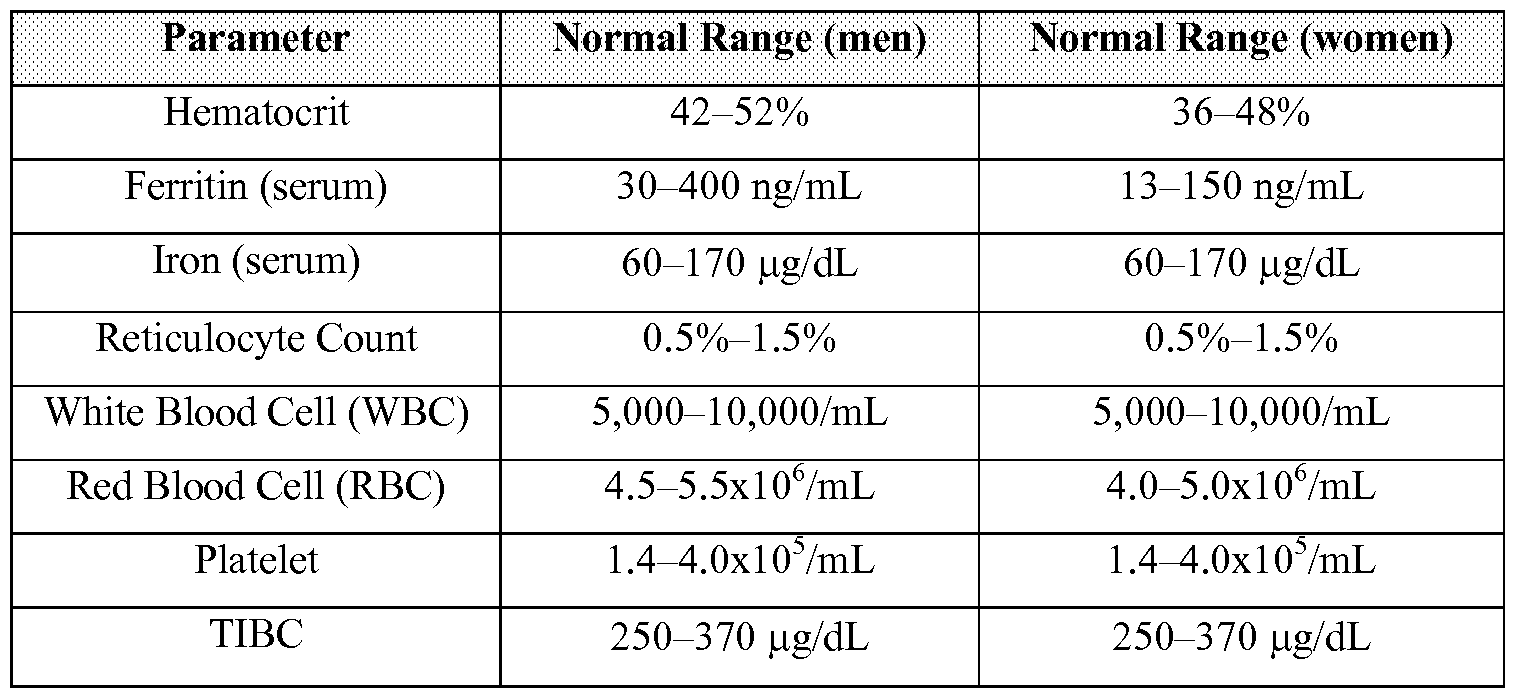 However, there are several factors that can result in a person producing erroneously elevated BAC results. One factor that can affect Breathalyzer BAC results is the test taker’s blood composition.
However, there are several factors that can result in a person producing erroneously elevated BAC results. One factor that can affect Breathalyzer BAC results is the test taker’s blood composition.
Blood is made up of microscopic particles suspended in a liquid known as plasma. The particles include red blood cells, white bloods cells and clotting platelets. The percentage of particles in relation to plasma in an individual’s blood is known as the hematocrit of the blood. The more particles in a sample, the higher the hematocrit measurement would be.
Alcohol is soluble in water which means that when alcohol is introduced into the bloodstream it will be found in higher concentrations in the plasma portion of the blood when comparted to the particulate portion. This means that the higher a person’s hematocrit is, the less plasma will be in blood which would lead to a higher concentration of alcohol and thus a higher blood alcohol content when measured. If two people consume the same amount of alcohol and one has a higher hematocrit, the plasma of that person will have a higher alcohol concentration.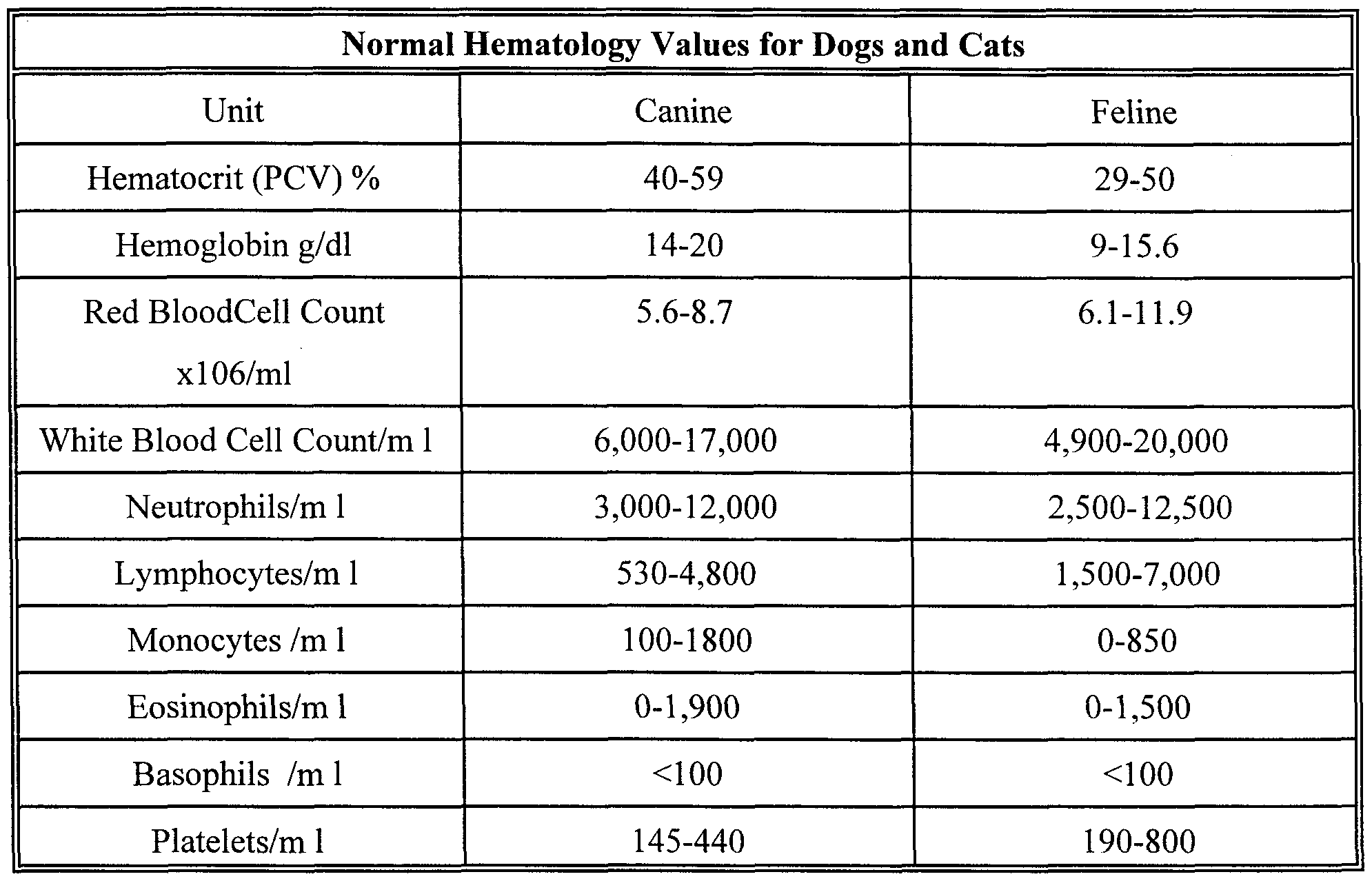
This concept comes into play when considering the results of a Breathalyzer test. Alcohol that is in the lung tissue will spread by diffusion to the air in a person’s lungs and the concentration of alcohol in the breath sample is considered to be directly proportional to the concentration of alcohol in the blood. However this principle only applies to liquids, not solids. Thus, blood that has a smaller proportion of plasma and more particulate matter (i.e. a high hematocrit) will erroneously show a higher BAC than someone who consumed the same amount of alcohol but has a lower hematocrit. Hematocrits can vary between individuals by as much as 15 percent, which can significantly affect the results of a BAC breath test.
A person can have his or her hematocrit measured by taking a blood test and it may be necessary for someone who has been charged with driving under the influence to introduce evidence of his or her hematocrit measurements. It may be necessary to use the testimony of an expert witness who possesses a thorough understanding of biology and blood composition.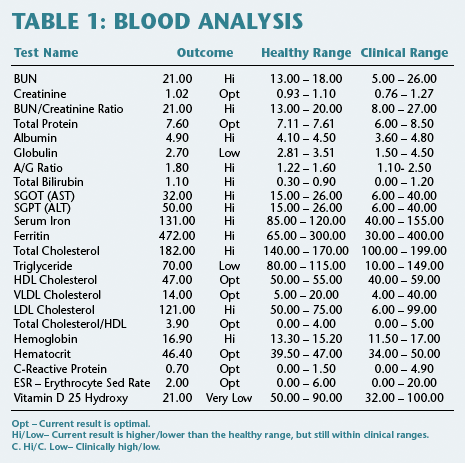
Someone who is anemic can also have a distorted BAC result. When a person is suffering from anemia, the proportion of plasma in his or her blood is substantially higher. This would subsequently lead to a higher concentration of alcohol in the blood and a higher BAC reading when tested on a Breathalyzer machine. This may be used to show that a defendant’s BAC results were not an accurate representation of his or impairment or were distorted as a result of a preexisting medical condition. This analysis would apply to test results that were obtained from the Breathalyzer machine used at the police station as well as the results taken using the Preliminary Alcohol Sensor (“PAS”) device that is used in the field during the preliminary DUI investigation.
If you have been arrested for DUI and took a breath test at any point, it is absolutely critical that you consult with a Los Angeles DUI Attorney as soon as possible. As a former Deputy District Attorney with over 14 years of prosecutorial experience, Los Angeles DUI Attorney Michael Kraut understands many of the complicated issues surrounding DUI chemical testing and knows how to effectively attack the prosecution’s case.
For more information about Los Angeles blood hematocrit, and to schedule your free consultation, contact Los Angeles DUI Lawyer Michael Kraut at the Kraut Law Group located at 6255 Sunset Boulevard, Suite 1520, Los Angeles, CA 90028. Mr. Kraut can be reached 24/7 at 888-334-6344 or 323-464-6453.
ASSESSMENT OF ADEQUACY OF HEMODILUTION DURING ARTIFICIAL CIRCULATION
Summary. Hemodilution, along with a positive effect – an improvement in rheological properties, a decrease in blood viscosity, also has negative consequences – a decrease in the oxygen capacity of the blood, a violation of the colloid-osmolar state. The clinical significance of hemodilution was studied under various temperature regimes and in conjunction with other characteristics of the cardiopulmonary bypass (EC) method. Examined 559patients who underwent correction of congenital, acquired heart defects, as well as correction of the condition in coronary heart disease. The studies were carried out at three stages of EC: cooling, complete hypothermic perfusion, and warming (1475 observations in total).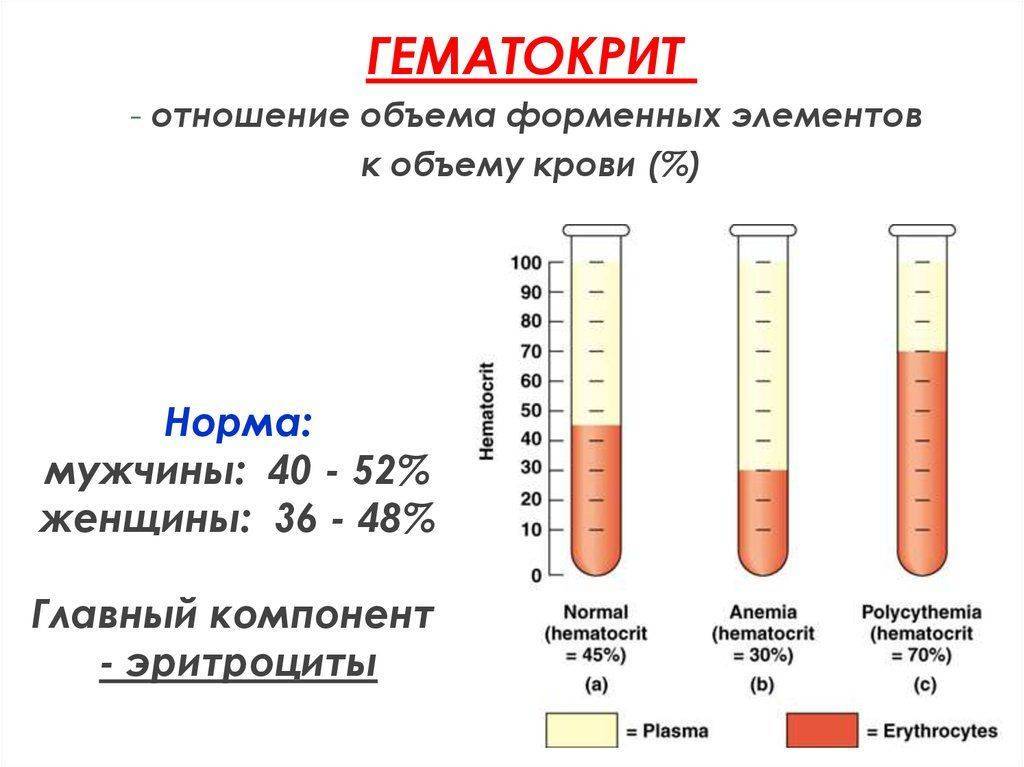 The hematocrit (Ht) value varied within 16–44%, the level of hypothermia reached 16°C. Of the interdependent indicators – (Ht, hemoglobin, kinematic blood viscosity (KVC)) – the most informative indicator in predicting the development of postoperative acute heart failure is KVC, acute cerebrovascular accidents and the overall mortality rate – Ht. With normothermic perfusion, the recommended level is 25–30%; with hypothermia 32 ° C – 23-27%, at 28 ° C – 22-25%, at 24 ° C – 20-23%. At temperatures below 20 °C, Ht is less than 22%.
The hematocrit (Ht) value varied within 16–44%, the level of hypothermia reached 16°C. Of the interdependent indicators – (Ht, hemoglobin, kinematic blood viscosity (KVC)) – the most informative indicator in predicting the development of postoperative acute heart failure is KVC, acute cerebrovascular accidents and the overall mortality rate – Ht. With normothermic perfusion, the recommended level is 25–30%; with hypothermia 32 ° C – 23-27%, at 28 ° C – 22-25%, at 24 ° C – 20-23%. At temperatures below 20 °C, Ht is less than 22%.
INTRODUCTION
The main task of the three interconnected systems: blood circulation, external respiration and the blood system is to deliver oxygen to tissues and remove metabolic products from them. Cardiopulmonary bypass (EC) should ensure that these functions are maintained at a level adequate to the needs of the body. There is no single approach to the problem of choosing criteria for the adequacy of IC.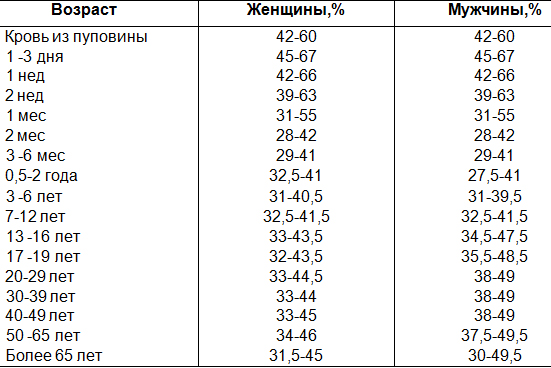 First of all, there is no consensus regarding the term “criteria for the adequacy of IC” (Osipov V.P. et al., 1992). Under adequate blood circulation, including artificial, one should understand such a state of blood circulation, in which the needs of each cell of the body for oxygen are satisfied (Osipov V.P., 1976).
First of all, there is no consensus regarding the term “criteria for the adequacy of IC” (Osipov V.P. et al., 1992). Under adequate blood circulation, including artificial, one should understand such a state of blood circulation, in which the needs of each cell of the body for oxygen are satisfied (Osipov V.P., 1976).
Since hematocrit (Ht) is related to the oxygen transport function of the blood and its suspension stability, it is one of the key characteristics of CI. The value of Ht is of particular importance in conditions of hypothermic hemoperfusion.
Studies by many authors have established that hemodilution not only does not impair oxygen transport, but, on the contrary, even improves it (Knyshov G.V. et al., 1990; Eliott M.J. et al., 1996). Normally, at rest, the most favorable indicators of viscosity and suspension stability, as well as the oxygen transport function of the blood, are provided at Ht equal to 32% (Suder-Plassman L. et al., 1970). By the value of Ht and taking into account other perfusion parameters, one can roughly assess the quality of EC (Ht 20–30% is good, 18–20% is satisfactory, less than 18% is unsatisfactory) (Lowenmark Kaarsen A. et al., 1995; Pedersen C. et al., 1996).
et al., 1970). By the value of Ht and taking into account other perfusion parameters, one can roughly assess the quality of EC (Ht 20–30% is good, 18–20% is satisfactory, less than 18% is unsatisfactory) (Lowenmark Kaarsen A. et al., 1995; Pedersen C. et al., 1996).
Hemodilution, along with positive effects – improvement of rheological properties, decrease in blood viscosity – also has negative consequences – a decrease in oxygen capacity, a violation of the colloid-osmolar state of blood.
Although various aspects of hemodilution are covered in detail in many works, under real conditions of EC, the choice of its optimal value in each specific case is still relevant. To date, the clinical significance of hemodilution in conjunction with other characteristics of EC has not been sufficiently studied.
The aim of the work is to study the effect of hemodilution under different temperature regimes of EC on changes in perfusion parameters and the likelihood of developing early postoperative complications: acute heart failure (AHF), acute cerebrovascular accident (ACV).
OBJECT AND METHODS OF INVESTIGATION
We examined 559 patients who underwent correction of congenital (CHD), acquired heart disease (AHD), as well as coronary heart disease (CHD). The studies were carried out at three stages of EC: cooling, complete hypothermic perfusion, and warming (1475 observations in total). The parameters of hemodynamics and oxygen transport, hematocrit (Ht), hemoglobin content (Hb), kinematic blood viscosity (KVC), average relative volume of erythrocytes (Ht/Hb), total peripheral resistance index (TRI), hemodynamic (GdETC) and hemostatic ( GsETK) efficiency of oxygen transport. The data were processed on an IBM standard PC.
The Ht value was 16-44%, the level of hypothermia reached 16 °C. In the early postoperative period, the severity of the condition and complications were also assessed.
RESULTS AND DISCUSSION
Body temperature, °C 1. |
When analyzing the effect of hemodilution on the quality and results of the use of CI, it was found that of the interdependent indicators of Ht, Hb, CVK, CVK is the most informative for predicting the development of AHF. An increase in hemodilution (decrease in Ht, Hb, CVK) at various temperature levels was accompanied by a decrease in GdETC (Fig. 1) and HsETK (Fig. 2).
Due to the fact that hemodilution predisposes to tissue edema, in parallel with the decrease in CVK in each temperature interval, an increase in SIRT was noted (Table 1). An increase in mean Ht/Hb was noted (Fig. 3), which is an indirect sign of erythrocyte edema (Ganushchak Yu.M. et al., 1990).
Body temperature, °С Fig. 2. HsETK depending on the value of CVK at different levels of hypothermia (n=1475) |
Table 1
Total peripheral resistance index, dyn • s • cm -5
Viscosity Temperature | 4. | 4-4.5 | 3.5-4 | 3-3.5 | 2-3 |
20-16 | 1186 | 1324 | 1849 | ||
24 | 1804 | 1995 | 2118 | 2114 | |
28 | 1628 | 1813 | 1824 | 1916 | |
32 | 1717 | 1804 | 1995 | 2118 | |
37 | 1512 | 1721 | 1506 | 1675 |
Body temperature, °С Viscosity, Pa/s |
In each temperature interval, an increase in hemodilution was accompanied by an increase in the frequency of registration of AHF in the early postoperative period.
According to an alternative analysis of variance, the effect of the CVK value during hypothermia on the likelihood of developing AHF was 6.04% (p<0.05), which is significant in terms of the proportion in the pathogenesis of complications, in comparison with other random or unaccounted factors.
In each temperature interval, the value of CVK, the level of Ht were determined, at which the severity of the negative effects of hemodilution was minimal. Thus, safe limits of hemodilution have been established, which reduce the likelihood of developing AHF (Table 2).
Table 2
Optimal Ht value (%) at which the likelihood of complications is minimal
Level | Complications under consideration | ||
hypothermia, °C | OSN | ONMK | Lethality |
37 32 28 24 Below 24 | 23–30 23–27 22–25 20–24 20–24 | 25–30 20-30 20–25 20–23 to 23 | 23–30 21–29 20–24 to 23 to 22 |
In each temperature interval, hemodilution exceeding the limits indicated in Table 2 was accompanied by a deterioration in the conditions of capillary blood flow (increase in IOPS, Ht/Hb) and oxygen transport (decrease in GdETC, GsETK). Clinically, this was manifested by an increase in the frequency of postoperative AHF. It was found that for predicting the development of AHF, the value of CVK, stroke, and the overall mortality rate, Ht, was of the greatest importance.
Clinically, this was manifested by an increase in the frequency of postoperative AHF. It was found that for predicting the development of AHF, the value of CVK, stroke, and the overall mortality rate, Ht, was of the greatest importance.
We analyzed the effect of hemodilution during hypothermia on the likelihood of stroke and overall mortality in the early postoperative period. At a temperature of 37 °C, Ht 23–30% (“optimum zone”) is optimal. With an increase in this indicator, an increase in mortality in the early postoperative period by 1.2–1.7 times is noted. With a decrease in temperature, the limits of the optimum zone also shift.
According to alternative analysis of variance, the effect of intraoperative Ht on the likelihood of postoperative lethal complications under different temperature conditions is 1.8% (p < 0.05). A more pronounced effect of changes in the Ht value during hypothermia was noted in patients with CHD (Table 3).
The zone of optimum Ht/temperature indicators is probably due, on the one hand, to a decrease in the oxygen capacity of the blood, which is acceptable for different levels of hypothermia, and, on the other hand, to a change in the CVC with a decrease in temperature. It is the ratio of the intensity of the processes, the value of delivery of the conditions of capillary blood flow, that determines the presence of an optimum zone. Displacement of the limits of this zone can lead to tissue hypoxia and become a trigger for the development of pathological reactions. This is manifested in the early postoperative period primarily by an increase in the likelihood of neurological disorders and overall mortality.
It is the ratio of the intensity of the processes, the value of delivery of the conditions of capillary blood flow, that determines the presence of an optimum zone. Displacement of the limits of this zone can lead to tissue hypoxia and become a trigger for the development of pathological reactions. This is manifested in the early postoperative period primarily by an increase in the likelihood of neurological disorders and overall mortality.
Table 3
Significance of changes in Ht value on the probability of developing a complicated course during operations using EC
Group of patients | Postoperative complications | Effect of change in Ht value during hypothermia (%) | p |
UPU (n=783) | ONMK lethal | 7. 4.90 | <0.05 <0.05 |
PPS and/or CAD (n=692) | ONMK lethal | 5.05 3.37 | <0.05 <0.05 |
All patients (n=1475) | ONMK lethal | 3.26 1.79 | <0.05 <0.05 |
In the formation of the zone of optimum parameters of CVK/temperature, the deviation of several indicators was important, indicating a change in the conditions of capillary blood flow (IOPS, Ht/Hb), as well as GdETK, GsETK. Going beyond the optimum zone is accompanied by an increase in the development of AHF in the early postoperative period.
Going beyond the optimum zone is accompanied by an increase in the development of AHF in the early postoperative period.
TERMINALS
1. Of the interdependent indicators – Ht, Hb, CVC – the most informative for predicting the development of AHF is CVC, and for predicting stroke and mortality – Ht.
With normothermic perfusion, the Ht level should be maintained within 25–30%; with hypothermia 32 ° C – 23-27%, at 28 ° C – 22-25%, at 24 ° C – 20-23%; below 20 °C – 22%.
References
Maksimenko B V, Onishchenko V F, Yakubyuk S A, Nastenko E A
Resume. Hemodilution series with positive effects – reduction of rheological power, decrease in blood viscosity, may have negative effects – decrease in acidic blood volume, damage to the colo-osmolar state. The clinical significance of hemodilution under different temperature regimes and the interaction with other characteristics of the method of piece blood circulation (SHK) was studied. 559 patients were taken care of, as a result of which the correction of congenital, swollen hearts was made, and I will also become a correction in case of ischemic heart disease. Follow-up was carried out at three stages of SC: cooling, total hypothermia, warming up (total 1475 guards). The value of hematocrit (Ht) varied between 16–44%, the level of hypothermia reached 16°C. From the number of mutually related indications – Ht, hemoglobin, kinematic blood viscosity (BVK) – the most informative in predicting the development of post-operative congestive heart failure – KVK, and acute stroke of cerebral hemorrhage and total years alnosti – Ht. In the minds of normothermic perfusion, Ht rive should be trimmed between 25–30%; at hypothermia 32 °C – 23-27%, at 28 °C – 22-25%, at 24 °C – 20-23%; at temperatures below 20 °C – less than 22%.
559 patients were taken care of, as a result of which the correction of congenital, swollen hearts was made, and I will also become a correction in case of ischemic heart disease. Follow-up was carried out at three stages of SC: cooling, total hypothermia, warming up (total 1475 guards). The value of hematocrit (Ht) varied between 16–44%, the level of hypothermia reached 16°C. From the number of mutually related indications – Ht, hemoglobin, kinematic blood viscosity (BVK) – the most informative in predicting the development of post-operative congestive heart failure – KVK, and acute stroke of cerebral hemorrhage and total years alnosti – Ht. In the minds of normothermic perfusion, Ht rive should be trimmed between 25–30%; at hypothermia 32 °C – 23-27%, at 28 °C – 22-25%, at 24 °C – 20-23%; at temperatures below 20 °C – less than 22%.
Key words: cardiac surgery, intravenous hemorrhage, hypothermia, hemodilution, postoperative complications
Maksimenko B V, Onischenko V F, Jakubyuk S A, Nastenko E A
9 0002 Summary. Hemodilution in parallels to positive qualities – improvement of rheological properties, decrease of blood viscosity, has also negative sides – decrease of the blood oxygen capacity, disturbances of a colloid-osmollar state. We studied clinical significance of hemodilution during a different temperature rates and in interconnection with the set of the artificial circulation (AC) characteristics. 559patients were investigated during the corrections of congenital, acquired heart lesions and of ischemic heart disease. Investigations were done during the 3 stages of AC: at the beginning — the stage of cooling, the stage of a full hypothermic perfusion and during rewarming (altogether 1475 observations). Hematocrit (Ht) value fluctuated in the range of 16–44%, hypothermia level reached 16 °C. Out of interdependent indices, Ht, hemoglobin, kinematic blood viscosity (KBV) are the most informative indices for prognosis the development of acute post-operative heart failure (especially KBV), and Ht — for prognosis the acute disturbances of the cerebral circulation and for prediction of a general mortality.
Hemodilution in parallels to positive qualities – improvement of rheological properties, decrease of blood viscosity, has also negative sides – decrease of the blood oxygen capacity, disturbances of a colloid-osmollar state. We studied clinical significance of hemodilution during a different temperature rates and in interconnection with the set of the artificial circulation (AC) characteristics. 559patients were investigated during the corrections of congenital, acquired heart lesions and of ischemic heart disease. Investigations were done during the 3 stages of AC: at the beginning — the stage of cooling, the stage of a full hypothermic perfusion and during rewarming (altogether 1475 observations). Hematocrit (Ht) value fluctuated in the range of 16–44%, hypothermia level reached 16 °C. Out of interdependent indices, Ht, hemoglobin, kinematic blood viscosity (KBV) are the most informative indices for prognosis the development of acute post-operative heart failure (especially KBV), and Ht — for prognosis the acute disturbances of the cerebral circulation and for prediction of a general mortality.+measures+how+much+space+in+the+blood+is+occupied+by+red+blood+cells..jpg) In cases of a normothermic perfusion it is necessary to maintain Ht at the range of 25–30%; during the hypothermia of 32 °C Ht should be kept at the level of 23-27%, at 28 °C – 22-25% at 24 °C – 20-23% correspondingly; in cases with temperature lower than 20 °C should be lowered below 22%.
In cases of a normothermic perfusion it is necessary to maintain Ht at the range of 25–30%; during the hypothermia of 32 °C Ht should be kept at the level of 23-27%, at 28 °C – 22-25% at 24 °C – 20-23% correspondingly; in cases with temperature lower than 20 °C should be lowered below 22%.
Key words: heart surgery, cardiopulmonary bypass, hypothermia, hemodilution, postoperative complications
High Performance Liquid Chromatography (HPLC).
Test material
Blood serum
Home visit available
Online check-in
Synonyms: Serotonin blood test; 5-hydroxytryptamine; serotonin; 5-HT; 5-Hydroxytryptamine; enteramine; Thrombocytin; 3-(β-aminoethyl)-5-hydroxyindole; Thrombotonin.
Brief characteristics of the analyte Serotonin
Serotonin belongs to the biogenic monoamines and is synthesized from the essential amino acid L-tryptophan. Serotonin is metabolized in the blood plasma, in the liver and other organs. Serotonin regulates physiological processes at the cellular level through interaction with a family of cell surface receptors.
Serotonin is metabolized in the blood plasma, in the liver and other organs. Serotonin regulates physiological processes at the cellular level through interaction with a family of cell surface receptors.
From 80 to 90% of the total amount of serotonin in the body is synthesized and deposited in the enterochromaffin cells of the gastrointestinal tract. A small amount of serotonin is continuously released from enterochromaffin cells into the lumen of the GI tract, where serotonin-activated intrinsic sensory neurons stimulate the peristaltic reflex and secretion.
From the enterochromaffin cells of the stomach and intestines, most of the serotonin enters the bloodstream and is adsorbed by platelets, which transport it to the tissues of the body, where serotonin takes part in physiological processes, such as proliferation and regeneration.
Serotonin acts as a neurotransmitter in the CNS and is involved in the regulation of behavioral and physiological functions. Psychological and behavioral processes influenced by the serotonergic system (ST-ergic) include memory, learning, eating behavior, sleep patterns, thermoregulation, pain modulation, cardiovascular function, and hypothalamic regulation of pituitary hormones.
Serotonin, acting simultaneously as a neurotransmitter and tissue hormone, is involved in the formation and regulation of various physiological processes of the body, both in normal and pathological conditions, playing an important role in maintaining homeostasis.
Under what conditions can the level of Serotonin in blood serum increase? Serotonin-producing tumors are usually carcinoid, arising from enterochromaffin cells in the small intestine, appendix, stomach, or colon, and rarely in the bronchi. Serotonin-secreting neuroendocrine tumors have clinical signs and symptoms that reflect the pharmacological properties of serotonin. Thus, the carcinoid syndrome caused by carcinoid tumors is characterized by attacks of severe bluish flushing of the skin lasting from several minutes to several days, as well as diarrheal watery stools, bronchoconstriction attacks, sudden drops in blood pressure, edema and ascites.
The study of blood serotonin is advisable to use in combination with the determination of the excretion of the metabolite of serotonin (5-HIAA) in the urine (see test No.


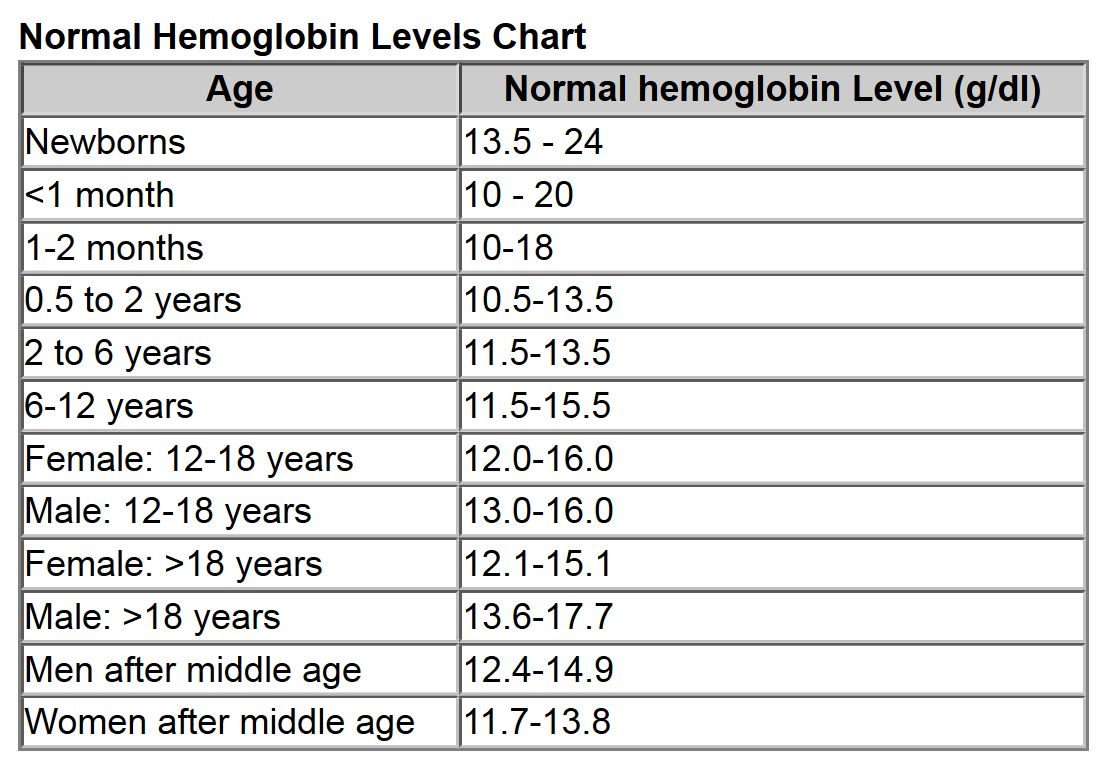 For example, a hematocrit of 38 means that 38% of the blood’s volume is made of red blood cells. Hematocrit and hemoglobin values are the two major tests that show if anemia or polycythemia is present.
For example, a hematocrit of 38 means that 38% of the blood’s volume is made of red blood cells. Hematocrit and hemoglobin values are the two major tests that show if anemia or polycythemia is present.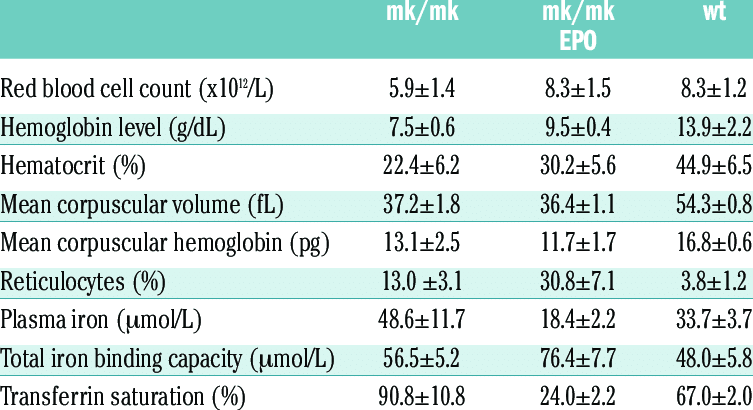 They are measured by a machine, and their values come from other measurements in a CBC. The MCV shows the size of the red blood cells. The MCH value is the amount of hemoglobin in an average red blood cell. The MCHC measures the concentration of hemoglobin in an average red blood cell. These numbers help in the diagnosis of different types of anemia. Red cell distribution width (RDW) can also be measured. It shows if the cells are all the same or different sizes or shapes.
They are measured by a machine, and their values come from other measurements in a CBC. The MCV shows the size of the red blood cells. The MCH value is the amount of hemoglobin in an average red blood cell. The MCHC measures the concentration of hemoglobin in an average red blood cell. These numbers help in the diagnosis of different types of anemia. Red cell distribution width (RDW) can also be measured. It shows if the cells are all the same or different sizes or shapes.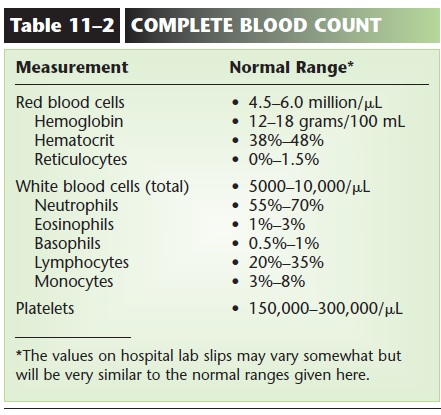 Also, platelets may be involved in hardening of the arteries (atherosclerosis).
Also, platelets may be involved in hardening of the arteries (atherosclerosis).


 This is a problem with absorbing vitamin B12.
This is a problem with absorbing vitamin B12.
 GdETK depending on the value of CVK at different levels of hypothermia (n=1475)
GdETK depending on the value of CVK at different levels of hypothermia (n=1475)  5-5.5
5-5.5 28
28